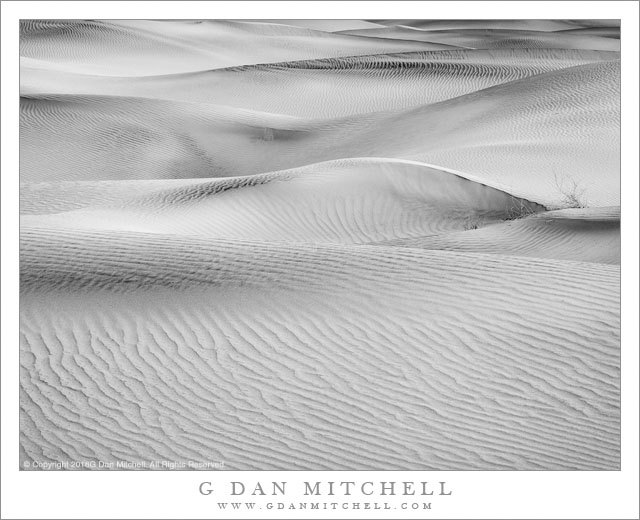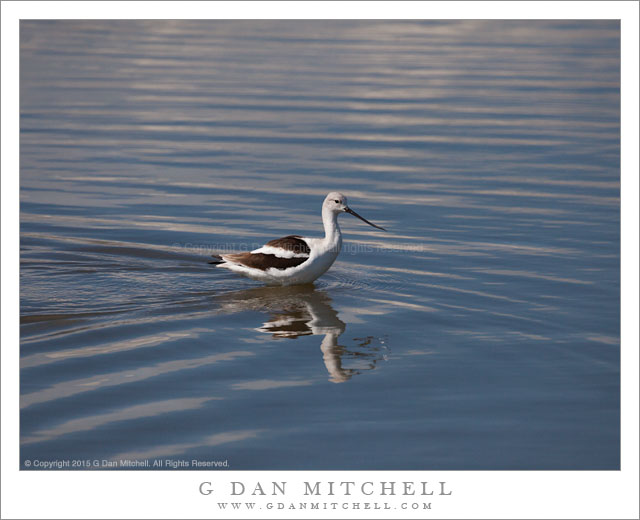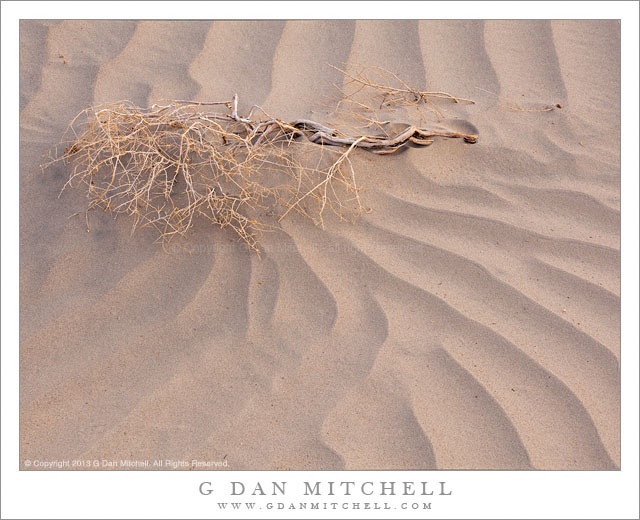
Sea of Sand. Death Valley National Park, California. March 31, 2016. © Copyright 2016 G Dan Mitchell – all rights reserved.
Overlapping sand dune patterns, morning
On the last day in Death Valley this spring we were planning to head off to the Los Angeles area in the morning, but I decided I wanted to photograph one more time before departing. Although I really wanted to sleep in, after many days of rising very early, I decided to get up early one more time and head back to the dunes alone for one final bit of photography. I headed out before dawn and arrived at a location I had been to before, parked the car, hoisted a backpack and tripod, and headed out across the playa toward a section of dunes where I was reasonably certain I would be able to photograph alone. The distances are always deceiving, and the playa walk took much more than the ten minutes one might guess that it would take if unfamiliar with these places. Eventually I came to the low dunes that I had been aiming for, and I began to look for places where I could make sand fill the frame.
The dunes are deceiving on other ways, too. You might imagine that they are on the march, being pushed along by winds. The wind does move sand — and it was blowing around my feet on this morning — but overall the dune forms are actually quite stable. Sometimes these active looking yet stable features make me think of a sort of stop motion ocean, with waves and crests and valley mostly frozen — a stopped landscape mirroring the active surface of water. The patterns here range from small (the little ripples in the foreground) to quite large (the overlapping crests marching into the distance.) I worked this scene and others like it for an hour, and then it was time to leave — a walk back across the playa back to my vehicle, and then the long drive out of the desert.
 G Dan Mitchell is a California photographer and visual opportunist. His book, “California’s Fall Color: A Photographer’s Guide to Autumn in the Sierra” is available from Heyday Books and Amazon.
G Dan Mitchell is a California photographer and visual opportunist. His book, “California’s Fall Color: A Photographer’s Guide to Autumn in the Sierra” is available from Heyday Books and Amazon.
Blog | About | Flickr | Twitter | Facebook | Google+ | 500px.com | LinkedIn | Email
All media © Copyright G Dan Mitchell and others as indicated. Any use requires advance permission from G Dan Mitchell.



